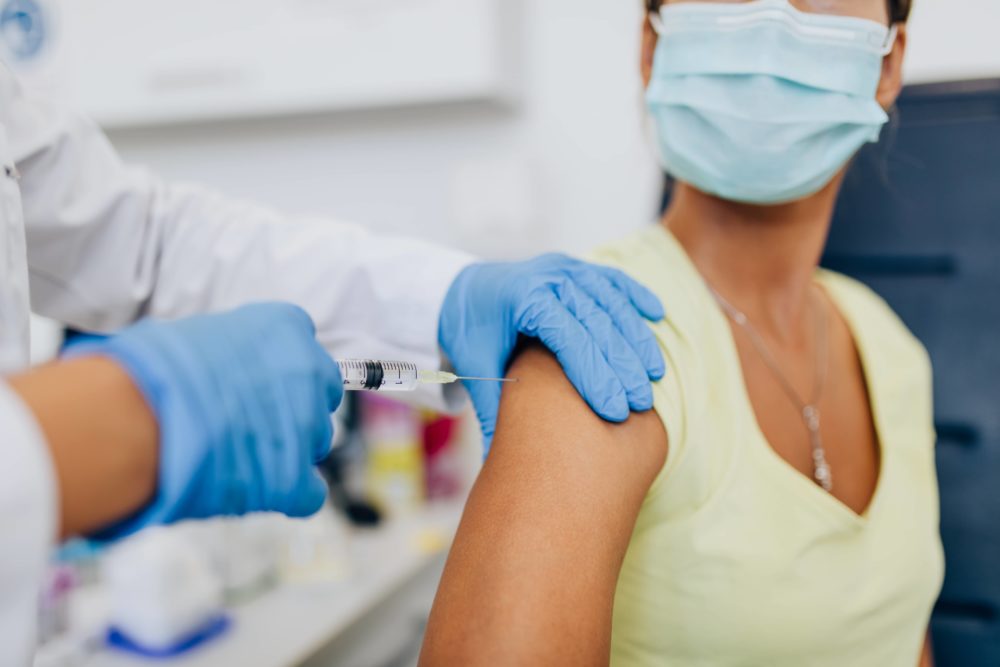
During the peak of flu season, our clinic reserves spots for patients who have upper respiratory tract symptoms. Some get antibiotics, others receive reassurance that it’s a viral infection and some are sent to the hospital for a higher level of care. During the 2020 flu season, we saw none of this. People who had respiratory symptoms were tested for COVID-19, returned home and nursed themselves back to health. There were very few cases in Sonoma County, and most likely in other parts of the North Bay. This was because we were all following protocol—hand washing, wearing masks and social distancing. These techniques were so effective that it kept the respiratory viruses at bay.
As we learn to coexist with the coronavirus in our community, the measures we take to minimize our exposure are effective for the influenza virus as well. More than 80% of Sonoma County residents have some level of immunity to the coronavirus from the COVID-19 vaccines they have received. Unfortunately, the flu vaccine rates are not as high.
Every year, scientists around the world meet and decide on which strains are likely to be prevalent for the year and determine the components of the vaccine. The influenza vaccine is approved for people, starting at 6 months of age and older. There are three kinds of influenza vaccines available in the market: inactivated, recombinant and live attenuated. The inactivated vaccine consists of pathogens that are grown in cultures and have the ability to cause disease destruction. The recombinant vaccines use one or multiple antigens of the virus to induce immunity. An antigen can stimulate your immune system to respond by promoting antibody formation. This method does not use the flu virus or chicken eggs in the production process, making it a good alternative for those who have a severe egg allergy.
Live vaccines have “weakened” viruses that have their disease-causing capacity destroyed, but still have their immunogenic properties. This is available as an intranasal spray for people as young as two years old through age 49. People with weakened immune systems and long-term health problems, as well as pregnant women, may not be eligible to get this version of the vaccine. Other examples of live vaccines available on the market are measles, mumps, rubella (MMR), Rotavirus, smallpox, chickenpox, yellow fever and Zostavax (the older shingles vaccine on the market).
Influenza vaccines do not provide long-term immunity and require inoculation each year. Generally, flu shots are effective for about 6 months and become effective about two weeks after vaccination. The best time to get the vaccine is at the end of October or before flu season begins in our community. If one gets it early, then we run the risk of reduced immunity at the end of flu season, especially for seniors. In past years, flu season has run into April and sometimes May.
The effectiveness of the vaccine depends on the age and health status of the person. It also depends on the match between the viruses in the vaccine and those in circulation. The high-dose vaccine is designed to provide people age 65 and older with better immunities against the influenza virus. This vaccine has increased the concentration of antigens, which allows for better stimulation of the immune system.
This is particularly important because up to 85% of flu-related death and 60% of flu-related hospitalizations occur in people over the age of 65. A 2018 study shows that flu vaccination among adults reduced the risk of being admitted to an ICU with flu by 82%.
The protection flu vaccine provides an individual varies from person to person. While it may not provide 100% immunity, it helps reduce the severity of the illness. It reduces the risk of having to go to the doctor with flu by 40% to 60%, according to the CDC. It reduces children’s risk of flu-related pediatric ICU admission by 74% during the flu season. The most striking benefit is that it has been associated with lower rates of some cardiac events among people with heart disease, especially among those who experienced a cardiac event in the last year. It is also associated with reduced hospitalization among people living with medical conditions such as diabetes and chronic lung disease, according to the CDC.
So if you’re debating whether to get the flu shot this year, know that getting the influenza vaccine will reduce the severity of this respiratory pathogen. In the meantime, the best way to protect against the flu is to follow the usual preventive measures such as washing your hands often.
Rajina Ranadiva, M.D., is a board-certified internal medicine physician with the St. Joseph’s Medical Group. She is also the medical director of the Petaluma Post-Acute Rehab. She can be reached at (707) 763-0802.
Author
-

Rajina Ranadive, M.D., is a board certified internal medicine physician with the St. Joseph’s Medical Group. She is also the medical director of the Petaluma Post-Acute Rehab. She can be reached at (707) 763-0802.
View all posts



